Aquatic Environment
The aquatic Environment is a vast and dynamic realm encompassing a diverse array of ecosystems, from the tranquil freshwater lakes and winding rivers to the boundless expanses of the salty seas and the mysterious depths of the ocean floor. This aqueous world, covering approximately 71% of the Earth's surface, serves as a crucible of life, hosting an extraordinary variety of organisms that have evolved to thrive in its challenging and often extreme conditions. At the heart of this environment is the hydrosphere, an interconnected system where water, in its various states, plays a pivotal role in shaping landscapes and influencing climate patterns. The aquatic environment is characterized by its fluidity and constant motion, driven by ocean currents, tides, and the circulation of water through the hydrological cycle. Within this aqueous expanse, marine ecosystems such as coral reefs, kelp forests, and abyssal plains support a kaleidoscope of life, ranging from microscopic plankton to majestic whales. In freshwater habitats, diverse ecosystems like wetlands, lakes, and rivers provide vital resources for both aquatic and terrestrial organisms. These environments are teeming with biodiversity, showcasing an intricate web of interdependencies where each species, no matter how small or seemingly insignificant, plays a crucial role in maintaining the delicate balance of the ecosystem. However, the aquatic environment is not immune to the impact of human activities; pollution, overfishing, climate change, and habitat destruction pose significant threats to the health of these ecosystems, jeopardizing the well-being of countless species and the services they provide. Conservation efforts and sustainable management practices are essential to ensure the resilience and longevity of this intricate aquatic tapestry, preserving not only the breathtaking beauty of underwater landscapes but also the irreplaceable biodiversity that defines our planet's watery realms. As we explore and study the aquatic environment, from the sunlit surface waters to the darkest ocean trenches, we uncover not only the wonders of marine life but also the profound interconnectedness of Earth's ecosystems, highlighting the need for responsible stewardship to safeguard the future of our aquatic world.

Perry Raso
Matunuck Oyster Farm, United States
J L Giovanna Hesley
Education Emerita, CropKing Inc., United States
Virendra Kumar Goswami
Indian Institute of Technology, India
Amit Das
Memorial University of Newfoundland, Canada
Mandeep Kaur
Panjab University, India
Pavarot Noranarttragoon
Department of Fisheries, Thailand



Title : Application of Artificial Intelligence and NISAR satellite to study the air sea CO2 exchange and aquatic toxicology to develop ‘Aquatic Pollution Remediation Technologies’(PART)
Virendra Kumar Goswami, Indian Institute of Technology, India
Title : Conditionally pathogenic microparasites (Microsporidia and Myxosporea) of mullet fish potential objects of mariculture in the Black and Azov Seas
Violetta M Yurakhno, A. O. Kovalevsky Institute of Biology of the Southern Seas of Russian Academy of Sciences, Russian Federation
Title : New approaches to assessing and managing the multispecies fishery in the Gulf of Thailand
Pavarot Noranarttragoon, Department of Fisheries, Thailand
Title : Integrating art, science and rural development: The multifaced role of aquarium keeping
T V Anna Mercy, Kerala University of Fisheries and Ocean Studies, India
Title : Seaweed aquaculture policy gap analyses in Indonesia, Kenya, and Tanzania
Megan Considine, The Nature Conservancy, Puerto Rico
Title : Utilizing art to enhance learning STEM subjects required for aquaculture
J L Giovanna Hesley, Education Emerita, CropKing Inc., United States